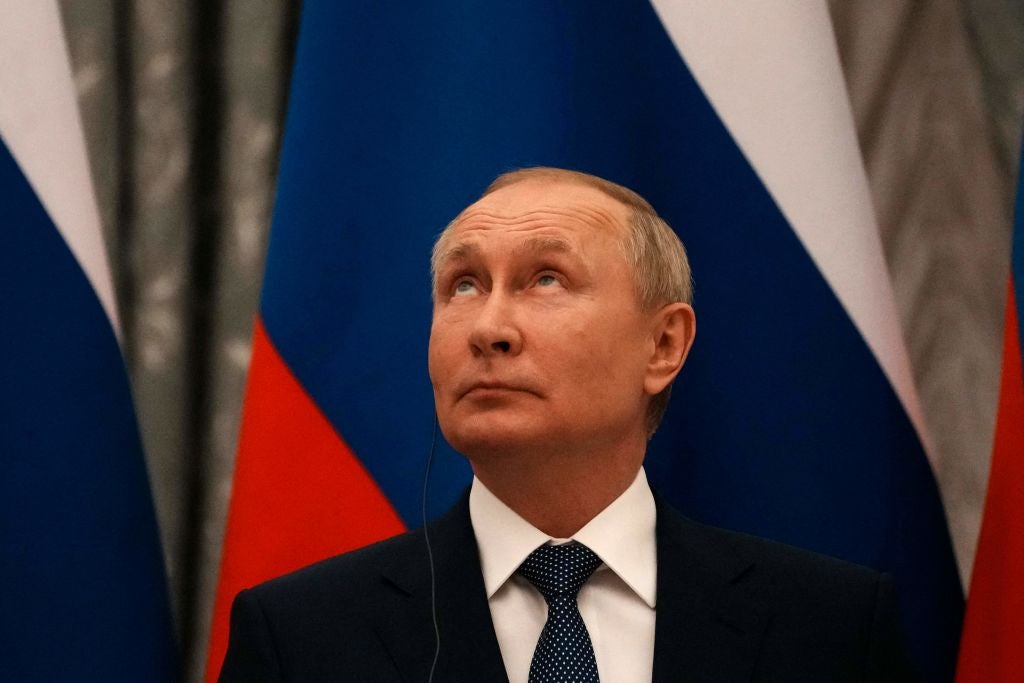
A new round of US, EU and UK sanctions against Russia has targeted the country’s foreign exchange reserves, a sharp escalation in the West’s response to Russia’s invasion of Ukraine.
The new measures, announced by the three powers on 28 February, would prohibit their citizens from engaging in any transactions with Russia’s central bank, its sovereign wealth fund or its Ministry of Finance – essentially freezing all central bank assets held in the US, UK or EU or by US, UK or EU citizens.
With sanctions and investor uncertainty cutting off capital inflows into Russia, the ruble was already facing the prospect of serious downward pressure – pressure that the central bank would have hoped to dampen by deploying strategic currency reserves.
Was Russia preparing for sanctions?
The Russian government has been building up these reserves for years, possibly in the hope of using them to ensure that the country’s economy would be able to withstand the kind of sanctions now being levelled. As of January 2022, Russia’s international reserves stood at $630bn (Rbs56.83trn), compared with $510bn prior to the annexation of Crimea.
The announcement of the new measures targeting Russia’s international reserves was followed by a sharp depreciation of the value of the country’s currency. The ruble fell by as much as 29% against the dollar on Monday (28 February), forcing the Russian central bank to hike interest rates to levels not seen in decades.
The bank’s aggressive countermeasures may indicate a lack of confidence in the country’s ability to withstand a sustained currency crisis, despite efforts taken by the Russian government to insulate the economy from such a crisis in the aftermath of its annexation of Crimea.
That includes the building up of currency reserves but also efforts to reduce Russia’s stockpile of foreign-denominated debt. However, this latter effort stalled in 2019 – at the time, popular dissatisfaction with falling living standards forced the government to boost spending on social services.
Another indicator of vulnerability is Russia’s reliance on imports, which have surged over recent months to levels well above those seen before the Covid-19 pandemic. Since March 2021, Russia has been importing $25bn worth of goods every month, compared with an average of $19bn in the five years before the pandemic.
With such a high dependence on imports, the ruble’s depreciation could be felt keenly by ordinary Russians. If Western countries decide they can afford to take more sustained action against Russia’s export sectors (notably oil and gas), the country could soon face the prospect of a balance of payments crisis.
The new sanctions mark a step change in the Western response to Russia’s invasion of Ukraine, targeting systemic weak points of the Russian economy rather than particular individuals and corporations.
That is partly because lighter measures have already been deployed without success, but it also represents a significant strategic shift – from targeting the fortunes and freedoms of individual elites to engineering a general economic crisis in Russia. Whether it will lead to peace in Ukraine, or merely economic misery for ordinary Russians, remains to be seen.
More coverage of the Ukraine invasion from Investment Monitor:
- ‘Who’s going to travel here or invest now?’: The impact of the Ukraine crisis
- What impact will the Ukraine invasion have on wheat prices?
- Tax havens blur who Russia’s allies are when it comes to investment
- Germany’s stance on Ukraine-Russia dispute isn’t just about gas
- Ukraine: an FDI snapshot
- The impact of the Russia-Ukraine conflict on real assets



